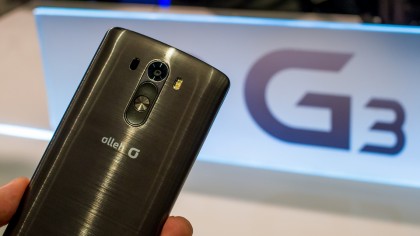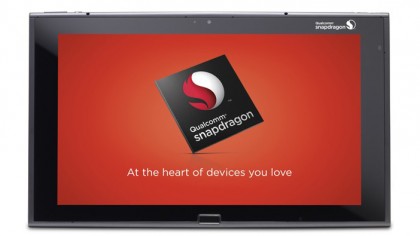QHD: why it's the future of smartphones
But my battery?
We're still left with the question of just how will QHD screens affect battery life? Michelle Leyden Li doesn't foresee a big issue; "The industry always seems to solve issues. The QHD and 4K screens will require a lot of power, but the industry always seems to rise to the challenge."
The biggest issue with cramming more pixels in is the effect this has on screen brightness; each pixel is, in essence, a tiny window complete with frame.
More pixels means more frames, all of which block some of the light coming out. With the LG G3 the Korean firm reckons it's cracked the problem by redesigning the pixel structure to allow more light out.
Quad HD screens come with four times the amount of pixels, so it's reasonable to assume that battery life would also be decreased by a similar - but divining the exact impact can be tricky.
According to Qualcomm "there's not a direct linear relationship [between screen and battery] and it can vary significantly depending on which display technology is used and what power saving techniques are implemented by the processor manufacturer, display manufacturer and device OEM".

Battery drain is one of the hottest topics surrounding the modern smartphone; manufacturers are investing heavily in eking out every last drop of juice.
Stamina Mode on Sony's Xperia devices or connectivity quick settings (such as in Samsung's TouchWiz UI) will become more and more important.
Sign up for breaking news, reviews, opinion, top tech deals, and more.
Chip manufacturers are also working to reduce power consumption in their GPUs as they are put under increased strain as screen sizes increase - all of which will help offset the big increase in strain the higher-res screens will put on our phone batteries.
The start of a pixel race?
High resolution handsets are here now, or should we say highER resolution. The LG G3 isn't the first QHD phone of the year, nor will it be the last and the thirst for bigger, better and more feature packed mobiles ensures this will run and run.
This is no surprise to Qualcomm as it sees the development of 2K and 4K displays on mobile as the dominant screen technology of the moment, and given that manufacturers are clamouring for the next big thing to stick on their latest flagship, the idea of a 4K smartphone isn't outside the bounds of reality in the next few years.

However, it's very unlikely that it will come to many of the screen sizes we're used to today - perhaps 5-inch screens could see a 4K option, but nothing below. The cost of making something that high resolution at a smaller size will increase costs hugely, and you're less likely to notice any difference the smaller you get.
Screen sizes are set to increase still further in the coming years as consumers accept larger devices in their pocket or bag, and as such higher resolutions will have a place.
While most people may not be able to perceive a complete difference when they first see a 4K phone, things like text reproduction will get ever closer to what we see on the page, making ebooks on the go a more appetising prospect.
On top of that, other screen enhancements from the TV world, such as brighter pixels and better colour reproduction, will make viewing our handsets that much nicer too, which in turn will give 4K a reason to exist in your pocket.
There's no doubt that QHD is going to be big, because the brands want that to be the case, so we can only hope that the new tech brings improvements elsewhere too.
And say it quietly, but the 4K smartphone will happen, as it's already used on monitors and soon tablets - after that it's just a short hop to phones as the costs of manufacture come down.
So you might as well make sure your prescription is up to date, as your smartphone's screen is only going to get sharper... but that's not necessarily a bad thing.
- 1
- 2
Current page: Battery pressures and a 4K future
Prev Page Why are QHD displays on our smartphones?